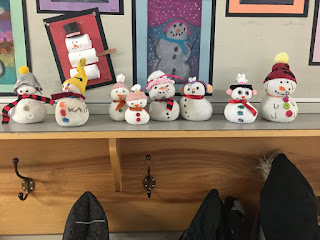The following are some ways for your child to learn from home this week.
Please let me know if you have any questions.
Please send us an email by the end of this week sharing a learning highlight.
Home Learning Tips:
Set up a place in your home where learning will take place.
Gather learning materials you may use: paper, pencils, coloured pencils or crayons, scissors, a ruler If possible
Set up a home learning schedule that includes 1 hour of learning per day.
Come up with a way to keep track of the time spent learning.
Make sure that there is an opportunity to have a body break every 20 minutes.
Keep a record of work using a notebook or duotang.
|
Math:
Practicing Subtraction Facts: Make flashcards for subtraction facts from 20. For example, 20-0, 20-1, 20-2, 20-3, 20-4, …. 19-1, 19-2.
Create a subtraction string for students to use to practice their subtraction facts. The string has 20 beads, 10 oval and 10 spheres. You could also make your string with two different colours of beads rather than different shapes.
Write down everything you can about the number 18 (A different number can be substituted each day of the week). Expect 15 or more answers for each number.
Work on the following open-ended math problem: I had 30 M&Ms, some were red, some were blue and some were yellow. How many of each did I have? (How many solutions to this problem can you find?). Show your work.
Mathletics: Mathletics assignments have been updated for this week. The focus is subtraction.
|
Reading:
Daily reading is highly recommended. We would suggest reading a variety of materials, several times a day. Look for reading materials at home, or from a website. Use these questions to help develop your child’s understanding of the story.
Reading one-on-one with your child daily is very important at this time.
Understanding a Story
1. What is going on in the story?
2. What do you know about the people in the story?
3. How are the people feeling?
4. What might the person be thinking?
5. What do you think the person will do next?
6. What is this story about (main idea)?
7. When/where is this story happening?
8. Was there a ‘problem’ in the story?
9. How did they feel at the end of the story?
Why do you think that?
|
Writing:
Please continue with your child’s weekly spelling homework.
Grade 1: no, now, out, not, how
Grade 2: can’t, didn’t, don’t, won’t, that’s, they’re
Other: what, when, who, went, were
For a writing assignment this week, have your child write about what they love about school. Have your child share their ideas aloud with someone first, then give them time to plan their writing by making a web or a list of words that will keep them focused. For example, if they love math, they may add the words, math or problem solving to their web. After this they can write their ideas in complete sentences, and follow that by drawing an illustration. Have your children reread their work to edit it for correct punctuation, uppercase letters in the correct spots and spelling.
|
The Following are Online Reading Websites You May Want to Look Into:
Google the following sites: getEpic, starfall, and ABCya
|
